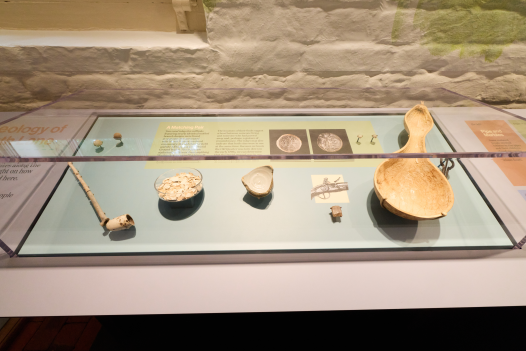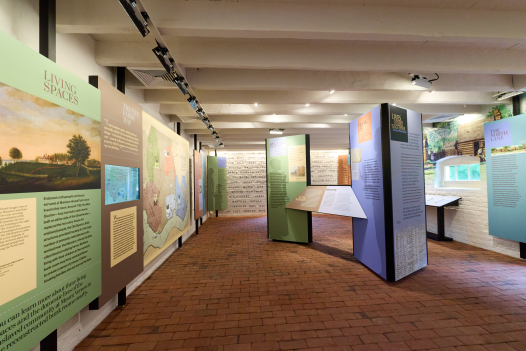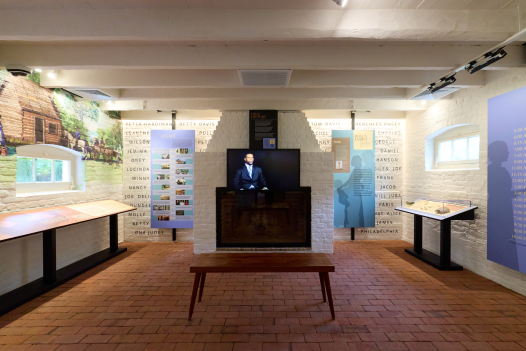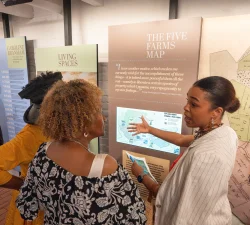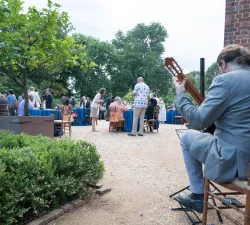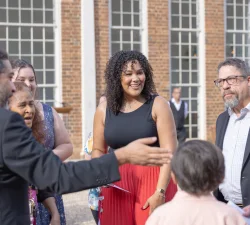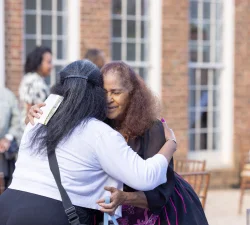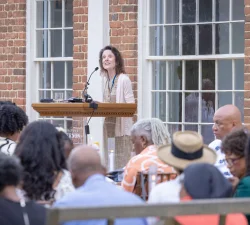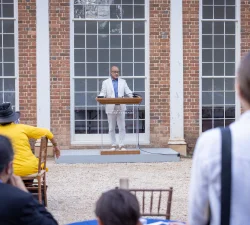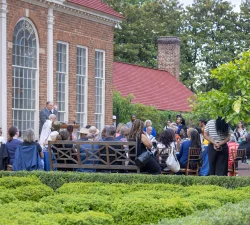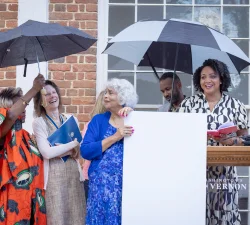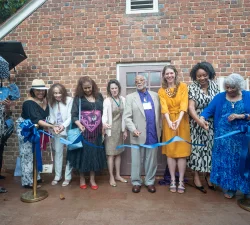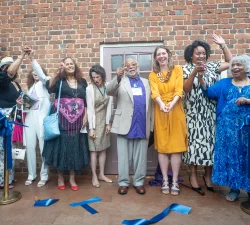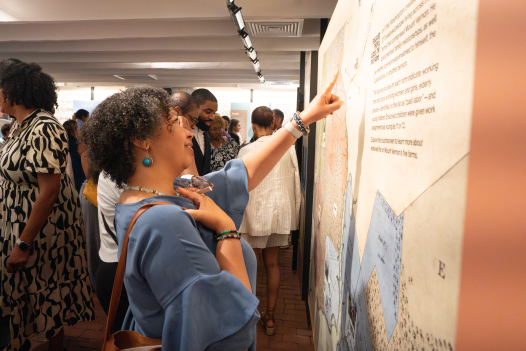Explore the lives of the enslaved people at Mount Vernon with our new exhibit, included with admission.
Within the quarters of the historic area, learn about the 317 enslaved people who lived and worked at George Washington’s five farms, gristmill, and distillery.
Find out how enslaved people formed families, created tight-knit communities, earned money, and acquired personal possessions.
Uncover the Voices of the Enslaved Through Artifacts and Ancestral Histories
Discover recently-excavated archaeological artifacts that highlight the humanity and work of the men, women, and children who were enslaved at Mount Vernon. Watch videos of their descendants as they share their ancestors’ stories.
Get to know enslaved individuals like Priscilla, Frank Lee, and Davy Gray through the kind of work they performed and the lives they built despite their enslavement.
You will learn about the lives and specialized labor of people such as:
- Isaac, the head carpenter
- Kate, an agricultural laborer and midwife
- Caroline Branham, a seamstress and housemaid
Understand George Washington’s Views on Slavery
Enter the 18th-Century Estate Through New Visual Displays
View a new mural showing the activities that once took place just outside the exhibit space. See how the north lane of the historic area once served as a communal hub for enslaved people, where daily chores, rare moments of recreation, and communal gatherings took place.
An interactive map of Mount Vernon’s original size—nearly 8,000 acres at the time of Washington’s death—shows where families lived and the varied nature of their work.
See More of the History of Enslaved Life at Mount Vernon Nearby
After you view the exhibit, visit the men’s and women’s bunkrooms, the stove room, and the shoemaker’s shop, setting an immersive scene of what daily life was like along the north lane.
“Thank you for your unwavering commitment to preserving the full and honest story of this historic estate. Your partnership in lifting up the voices of the enslaved is deeply felt and profoundly appreciated.”
- Dr. Julie Sumner, Chair of the League of the Descendants of the Enslaved at Mount Vernon, upon the opening of the exhibit
Lives Bound Together Exhibit Opening
Celebrating a pivotal moment in history—the ribbon cutting for "Lives Bound Together" bringing to light the stories of the enslaved community at Mount Vernon.
Explore How the MVLA is Leading A Legacy of Preservation
When the Mount Vernon Ladies' Association purchased Mount Vernon, they preserved structures connected to the history of enslavement on the estate.
While an open discussion of slavery has evolved over time, many individuals have worked alongside the MVLA to further the preservation and interpretation of the history of slavery here, particularly the descendants of Mount Vernon’s enslaved community and the local organization Black Women United for Action (BWUFA).
Our interactive timeline, Interpretation of Slavery at Mount Vernon, highlights the MVLA's efforts throughout history to preserve, interpret, and memorialize those who were enslaved at Mount Vernon.
